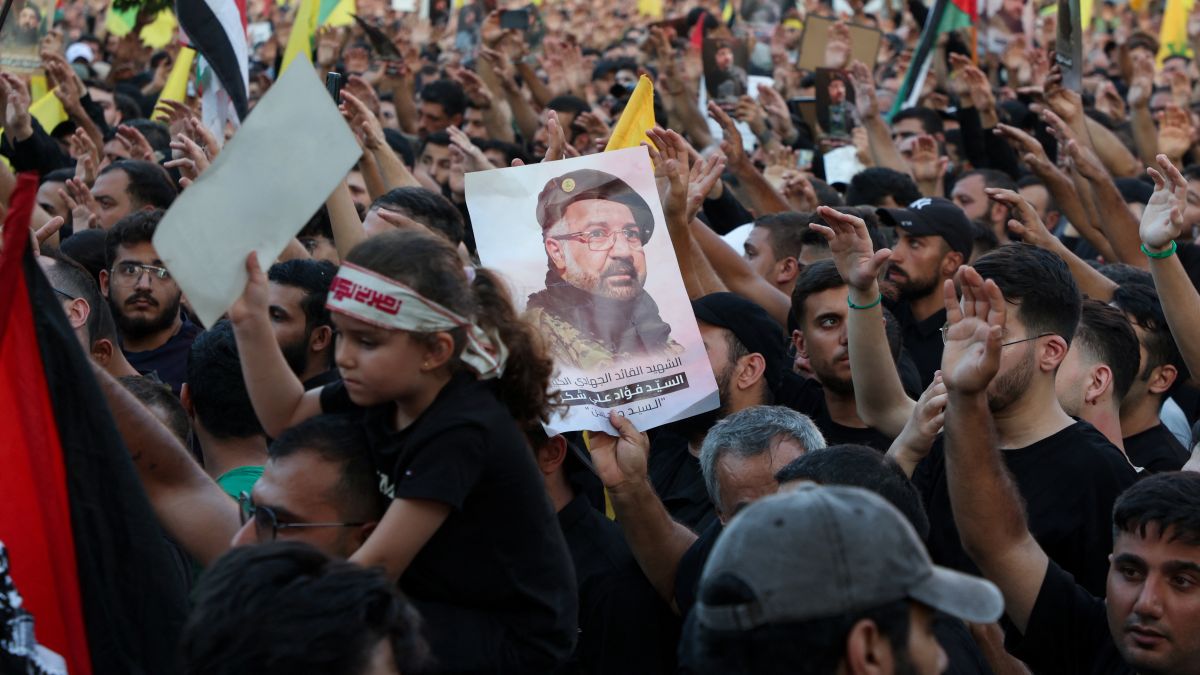A lot has happened in 2024 across the world. The year also saw Israel dismantling one of its biggest enemies — the Hezbollah. One after the other, Tel Aviv assassinated top-ranking officials of the Lebanon-based group, including Hezbollah leader Sayyed Hassan Nasrallah and top commander Fuad Shukr.
Many experts note that these assassinations carried out by Israel’s military and its foreign intelligence agency — Mossad — significantly weakened Hezbollah’s leadership structure and gave Israel the edge it needed in the war it has waged since the October 7, 2023, attacks.
Now, a New York Times investigative report reveals that Israeli spies burrowed deep into the Hezbollah group, enabling them to carry out these assassinations and effectively wipe out the group from existence.
Here are all the big bombshells that the report has now dropped.
Case of Fuad Shukr and his four mistresses
For the past two decades, Israel has been collecting intelligence on Hezbollah —recruiting people to plant listening devices in bunkers, tracking meetings and maintaining near-constant visibility into the movements of the group’s leaders.
Through the years, Mossad , according to current and former American and Israeli officials, recruited assets in Lebanon who, in turn, fed Israel information about the locations of hide-outs and assisted in monitoring them.
Through their intelligence collection, Mossad uncovered intimate details about Hezbollah commanders. For instance, Israeli spies found out that Fuad Shukr — a founding member of Hezbollah and identified by the US government as one of the planners of the 1983 bombing of the barracks in Beirut, Lebanon, killing 241 American Marines — had four mistresses.
Moreover, this year, Israel discovered that Shukr had been feeling guilt about this situation and sought assistance from Hezbollah’s highest religious cleric to marry all four women, reported the New York Times, citing intelligence sources.
Hezbollah’s top cleric, Hashem Safieddine , then arranged four separate phone-based wedding ceremonies for Shukr.
It is unclear where the women lived and where the phone calls took place. The unions, however, did not last, the New York Times reported.
Later, using the intelligence collected on him, Israel on July 30 launched an airstrike on a building in the Haret Hreik district of Daniyeh, a suburb in southern Beirut, killing Hezbollah commander Fuad Shukr.
According to a Wall Street Journal report, Shukr, also known as The Ghost, received a phone call just before his killing, asking him to go up five storeys in the building. He didn’t hesitate and rushed there where death awaited him. The Israeli airstrike took Shukr along with his wife, two other women, and two children, said a Wall Street Journal report quoting a Hezbollah official.
Turning pagers into killers
The New York Times report also reveals how Israel developed plans to turn pagers and walkie-talkies, communication devices, into killers.
The American daily reports that Israel’s Unit 8200 and Mossad supported a plan to supply the Lebanon group with booby-trapped devices that could be detonated in the future. While designing the devices was relatively easy, ensuring that these exploded-filled devices reached the hands of Hezbollah’s fighters was the challenge.
In 2014, Israel seized an opportunity when the Japanese technology company iCOM stopped producing its popular IC-V82 walkie-talkies. Learning that Hezbollah wanted these specific devices, they began manufacturing replicas of them, with the first such pieces reaching Lebanon in 2015.
Additionally, with Hezbollah becoming wary of smartphones and using pagers , Israel looked to adding explosives to the communication device and worked to build a network of shell companies to hide their origins and sell the products to Hezbollah.
They oversaw the production of the pagers with agents and then marketing these devices to Hezbollah leaders.
Hassan Nasrallah didn’t think Israel would assassinate him
The New York Times, citing Mossad officials and other intelligence sources, reported that Hezbollah Secretary-General Hassan Nasrallah underestimated Israel’s willingness to assassinate him.
Despite warnings from fellow Hezbollah members, he remained in a Beirut bunker 40 feet underground on September 27, which is where Israeli F-15 fighter jets dropped massive explosives, ending his life.
According to reports, Israel used nearly 80 tonnes of explosives, including approximately 85 specialised “bunker-buster” bombs to penetrate the fortified structures. “Everything we planned was executed precisely, with no errors, both in intelligence, the planning, with the planes and the operation itself. Everything went smooth,” the commander of the IAF’s 69th Squadron told reporters, as per the Times of Israel.
Nasrallah’s body was found the next day, buried in the rubble in the embrace of a top Iranian general based in Lebanon, both having died of suffocation, according to Israeli intelligence reports.
With inputs from agencies
)